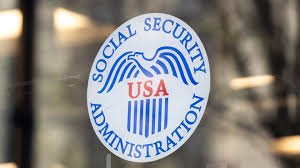The Social Security Administration (SSA) has recently announced significant cuts to its operations, following a directive from President Donald Trump. The move includes reducing spending, downsizing the workforce, and closing various field offices, all as part of the ongoing effort to eliminate what the administration calls a “bloated” structure. While the changes have stirred controversy, with critics raising concerns over potential disruptions, Trump’s decision is seen as a step towards reforming government operations.
The Impact on the Social Security System
As part of the changes, the SSA has laid off approximately 7,000 employees and shut down several of its regional offices. The move has created fear among beneficiaries, as the Social Security program currently supports about 70 million Americans. Former Maryland Governor and SSA commissioner Martin O’Malley expressed concerns to CNBC, predicting that these cuts could lead to the collapse of the system and interruptions to benefits within a matter of weeks. “You’re going to see the system collapse and an interruption of benefits,” O’Malley stated, referring to the short-term implications of these sweeping changes.
Closure of the Office of Transformation
One of the most significant actions taken by the Trump administration is the closure of the Office of Transformation, a department within the SSA that was created in 2023. The department’s primary mission was to modernize the SSA by implementing digital services and making processes more customer-centric. The team working under this office focused on improvements such as reducing the need for physical signatures on SSA forms and promoting the use of electronic documentation. According to a September press release, more than 30 forms are now available for electronic signatures, covering 90% of the most frequently used forms by Social Security customers.
Lee Dudek, the acting commissioner of the SSA, defended the decision to shut down the Office of Transformation, calling it a “wasteful and inefficient office” that was created under the previous administration. He claimed that its closure would streamline operations and eliminate redundancies within the agency. “This redundant office was created under the previous administration and we are righting that wrong,” Dudek said.
The Office of Transformation’s Role in Modernization
The Office of Transformation had been working on a range of initiatives aimed at making the SSA more efficient by leveraging technology. These initiatives included the introduction of digital signatures and online form submissions, which were expected to ease the application process for millions of people. Additionally, the office had been working to consolidate document management systems to ensure that customers only needed to submit required documents once, improving the overall efficiency of the system.
One example of the department’s efforts to modernize SSA services was the push to standardize processes across the agency. This involved collaborating closely with the IT team to overcome obstacles presented by the agency’s aging technology. Despite these advancements, the shutdown of this department raises questions about the future of digital services within the SSA.
What Does This Mean for Beneficiaries?
The closure of the Office of Transformation is seen by many as a setback for the SSA’s modernization efforts. Kathleen Romig, the director of Social Security and Disability Policy at the Center on Budget and Policy Priorities, called the decision “exactly backwards.” She noted that the office was essential for reducing red tape and improving the SSA’s technological capabilities, ultimately benefiting the millions of Americans who rely on Social Security services.
Betsy Beaumon, the former chief transformation officer, also expressed concerns about the lack of oversight for the agency’s digital services. She explained that the team from the Office of Transformation was instrumental in identifying and addressing the digital needs of the agency. With the team disbanded, Beaumon worries that the SSA will face significant challenges in maintaining and improving its online services.
At present, only 25% of the SSA’s services are available online, and the Office of Transformation had been working to increase that number. With the closure of this office, experts warn that the public may face roadblocks when trying to access services online or via tele-service centers. Marcela Escobar-Alava, the former chief information officer, explained that without the department’s efforts, customers would likely encounter dead ends when attempting to use online platforms to manage their Social Security needs.
Widespread Concerns About the Future
The shuttering of the Office of Transformation and the broader restructuring of the SSA have raised alarms about the agency’s ability to adapt to the changing needs of its beneficiaries. The SSA plays a critical role in the lives of tens of millions of Americans, providing essential services such as retirement benefits, disability support, and survivors’ benefits.
While President Trump’s administration has argued that these cuts are necessary to eliminate waste and improve efficiency, many critics fear that the changes will ultimately harm those who rely on the system. Without the necessary modernization efforts in place, beneficiaries may struggle to access the services they need in a timely manner.
Looking Ahead
The next few months will be crucial in determining how these changes affect the future of the SSA and its services. As the government continues to streamline operations, it remains to be seen whether the promised efficiency gains will outweigh the potential disruptions to services. Beneficiaries, advocates, and policy experts will be closely monitoring developments, particularly the ongoing challenge of integrating technology into an agency that has long relied on outdated systems.
Disclaimer – Our team has carefully fact-checked this article to make sure it’s accurate and free from any misinformation. We’re dedicated to keeping our content honest and reliable for our readers.

